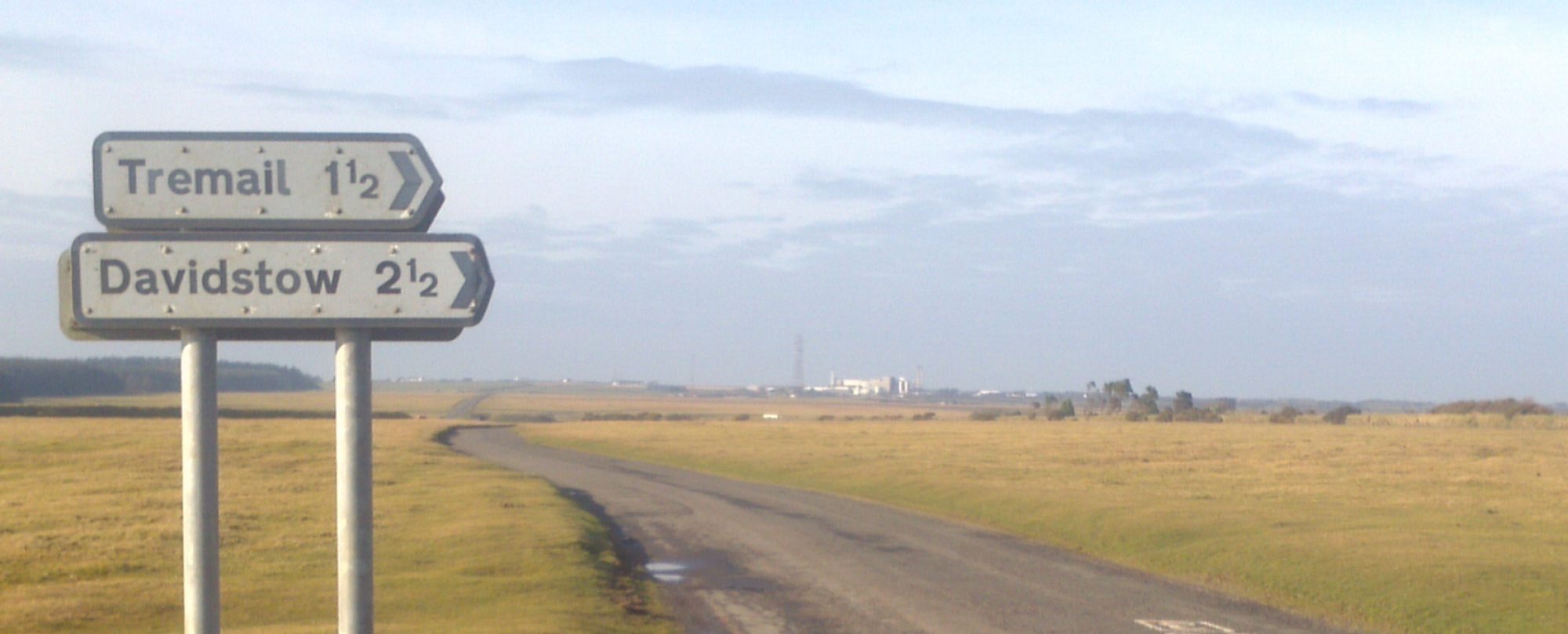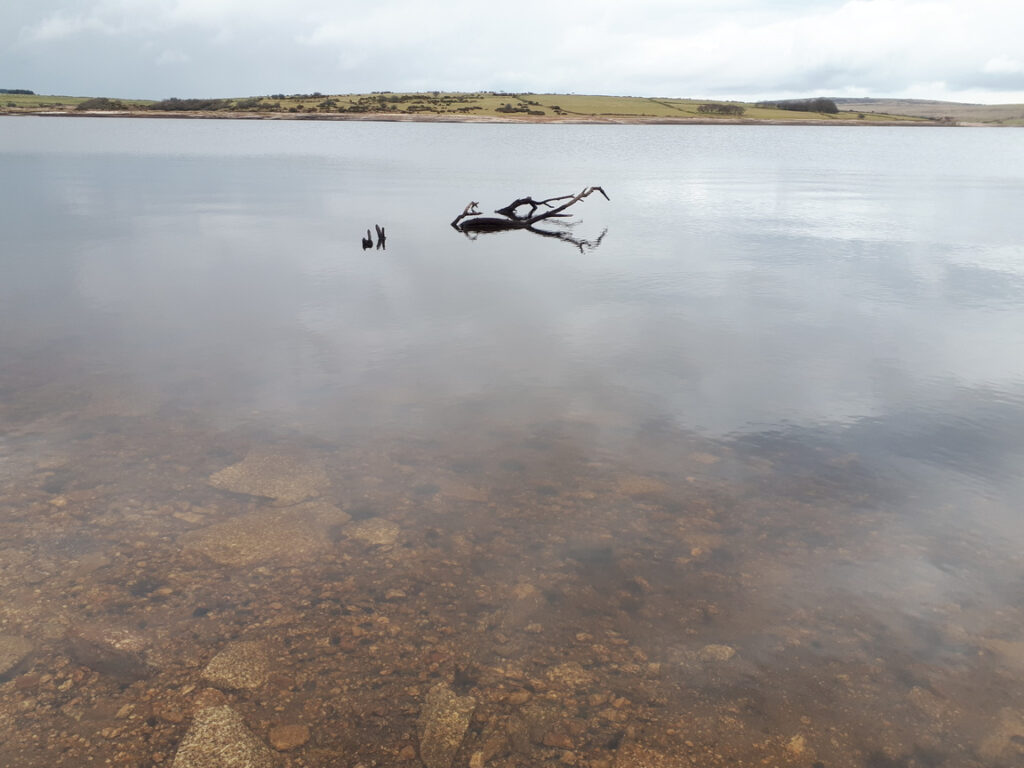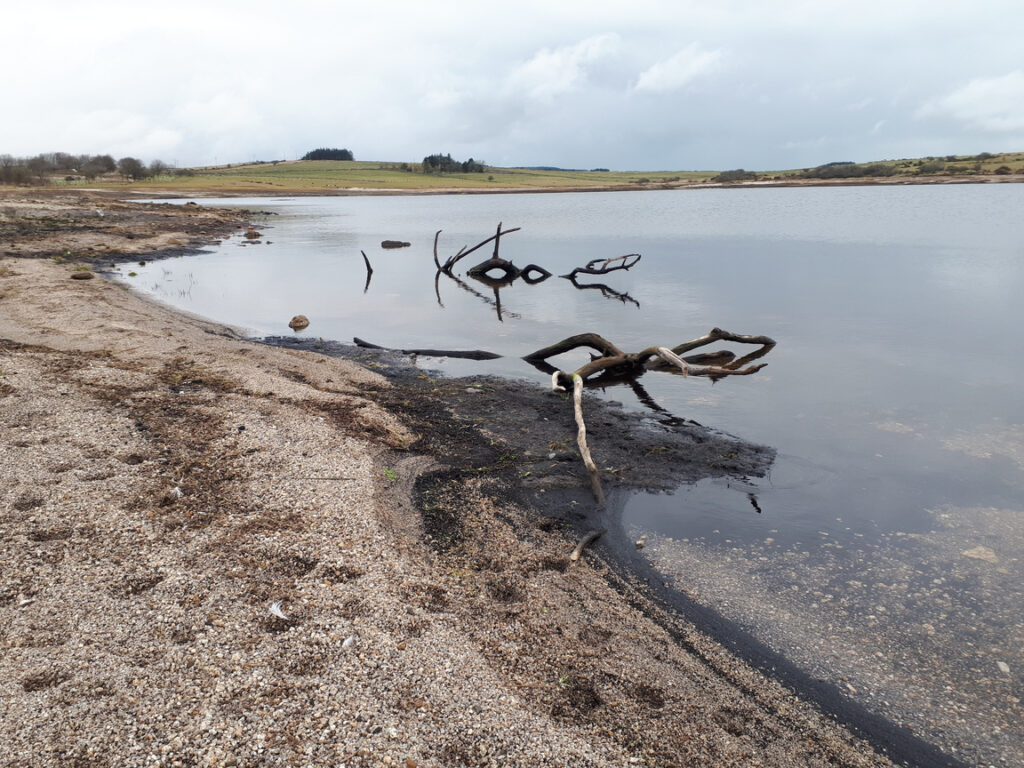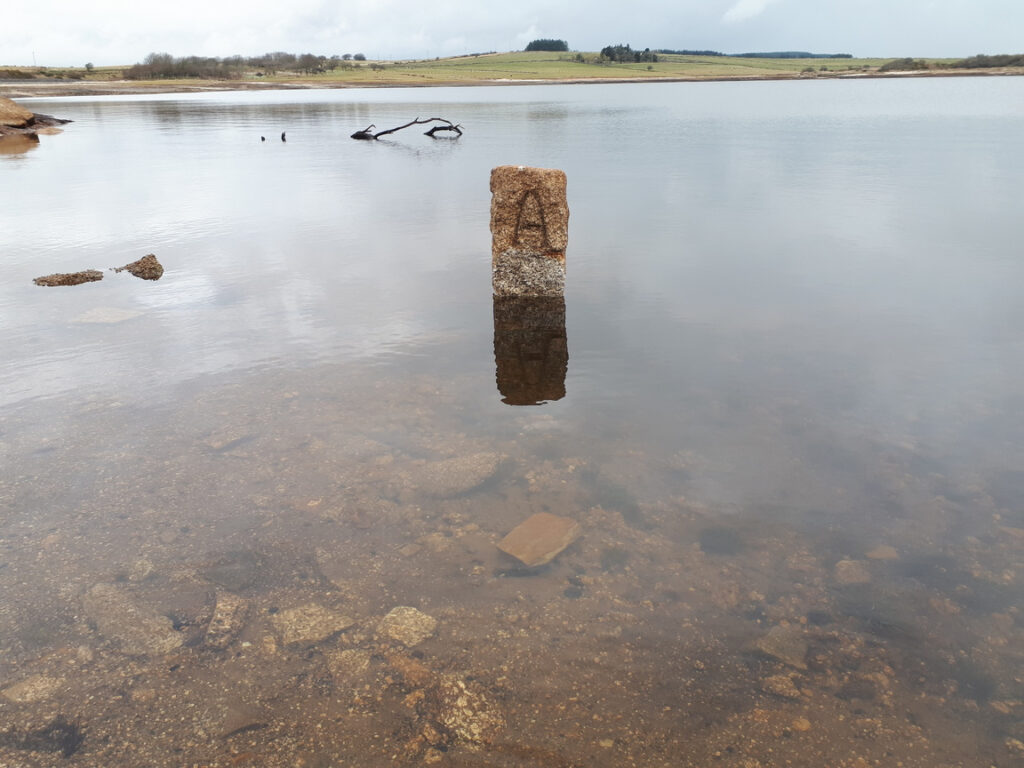As our regular reader(s) will be aware, we have been closely following the water level in Crowdy Reservoir since the locked down spring of 2020. We also started following the water level of Colliford Lake very closely in the early summer of 2022 and during the subsequent drought. Cornwall is still subject to a “hosepipe ban“, officially termed a “temporary use ban”.
More recently we have been astonished to watch the graph of Colliford water storage on South West Water’s web site as the water level in by far the largest of Cornwall’s reservoirs failed to reach even 50% of total net capacity so far this year. By last weekend it had even started to fall:

This morning we went to see for ourselves what a half full reservoir looks like. Here is some of what we discovered, starting with evidence of previous human activity in the vicinity of what used to be Menniridden, recently uncovered for an extended period by the currently abnormally low water level in the reservoir:
Here’s the first in a series of videos we recorded. This one starts with Kasia wandering across the vast exposed “beach”, shot from on top of Colliford Dam:
[Edit – March 7th]Personally I can’t conceive of why it isn’t fuller, and where all the water’s gone. It’s been a very dry February, but even so it was very wet over the winter and according to the latest Government figures the [annual] average rainfall for the last 12 months is just slightly above [the long term] average.
Maybe the average isn’t important? If it rains heavily and it all runs off dry land into the oceans it doesn’t fill up the reservoirs?
Down on the Colliford “beach” I recorded a panorama from a sandy spot near the water’s edge:
It’s by far the largest reservoir in Cornwall… It’s the beginning of March, and it’s only half full.
So what are we all going to be drinking come August, I cannot help but wonder?
BBC News were also filming at Colliford Reservoir yesterday, and I was interviewed by Kirk England for today’s “Spotlight” programme. In a report on the BBC web site this morning Kirk writes that:
David Harris, South West Water’s drought and resilience director, said nobody could predict how much rain would fall but that the company had a plan in place to cover all scenarios.
Desalination plants remove salt from seawater to produce clean drinking water.
There are currently plants in the Isles of Scilly and the Channel Islands, along with a plant in London, but SWW is planning two for Cornwall at locations that have yet to be disclosed.
“What last year has shown us and what climate changes shows us is we need to be developing climate-independent sources of water here in Cornwall,” said Mr Harris.
“We’ve got an 800-odd mile coastline; it’s logical for us to look to desalination.”
Kirk references his chat with me as follows:
Environmental campaigner Jim Hunt from Davidstow, near Camelford, has been monitoring reservoir levels – including at Colliford – for the last few years and said the level was “astonishingly low”.
“It rained hard over winter, with a very dry February and now Cornwall’s biggest reservoir is half-full,” he said.
“Where’s the water gone?”
David Harris didn’t answer that question, but he did add that:
It was hoped the plants could be operational by the summer but admitted that was “very challenging”, both from an engineering perspective and in terms of permits, which SWW was working on with the Environment Agency and Cornwall Council.
However when I discussed that matter with South West Water Help on Twitter, this is what I was told:
Hi Jim, I’d consider it highly unlikely they’ll be operational by Summer 2023 holiday season.
— South West Water (@SouthWestWater) March 7, 2023
With our net zero plan (https://t.co/5xVpKiCOHU) we signed a contract with an
electricity supplier to supply South West Water with 100% certified UK renewable energy. – Luke
P.S. I had about 15 seconds of fame near the start of the BBC South West 6PM news this evening!
It’s viewable on iPlayer in the UK until ~6:30 PM UTC tomorrow:
https://www.bbc.co.uk/iplayer/episode/m001jxh5/spotlight-evening-news-07032023
To be continued…





The connection may not be immediately apparent, but drifting only slightly off topic, when I got home I Googled “Colliford geology”, which led me to this recording of BBC reporter Christine Butler speaking on James Churchfield’s show on BBC Radio Cornwall:
https://www.bbc.co.uk/sounds/play/p0f4mf8f
According to the BBC Sounds web site:
Sadly that’s the first I’ve heard of Kerdroya, but that led me to the project’s section on the Cornwall Area of Outstanding Natural Beauty web site:
That in turn led me to this explanatory video, which contains many pretty pictures of Colliford Lake and the wider Bodmin Moor:
Here’s a clip of the BBC’s Kirk England speaking to South West Water’s new Director of Drought and Resilience, David Harris, during James Churchfield’s show on BBC Radio Cornwall this morning:
https://www.bbc.co.uk/sounds/play/p0f75t4s
South West Water have issued a press release concerning desalination:
Why are the water reserves in Colliford so low in comparison to the storage facilities on Dartmoor that supply Plymouth and west Devon?
Is the reason increased demand?
or
Is the reason the comparative size and elevation the watersheds?
I hear from LanreathPC that SSW plan ,this year, to take out three times as much water from the Fowey at the water treatment works above Lostwithiel as is put in from Colliford. If this is the case what will happen to the water level in the river down stream from the point of extraction.
That’s the £64 billion question Tim!
SWW say that post Covid demand has increased a lot faster than their forecasts, which seems entirely feasible to me. However we had an abnormally wet winter, until February at least, so one would have hoped that Colliford would have refilled more quickly than it has. The water level in Roadford also currently leaves a lot to be desired.
During the webinar I attended last week SWW insisted they would ensure that a minimum “environmental flow” would be maintained in all rivers, if necessary releasing water from reservoirs for that purpose.
This is a good question since reservoirs in most of the rest of the UK, including East Devon reservoirs like Wimbleball, are now full to the brim after a very wet Autumn and further high rainfall periods from mid-Dec to mid-Jan and now again in March.
The problem with both Roadford and Colliford is both are inadequate as reservoirs, with a very small catchment area and therefore a very slow refill time. SWW has admitted it could take three years of above average rainfall to refill these reservoirs which indicates very poor resilience.
That, coupled with the fact that the population of Cornwall trebles or more during the summer months when demand is greatest, means it is only a surprise serious problems have not emerged earlier.
Extra desalination plants should have been built years ago, but better late than never. Certainly SWW needs major water infrastructure investment if the population of Cornwall is not to suffer under regular water restrictions in the future.
Energy capture has to be the answer, if water is pumped uphill into colliford, hydroelectric power can be recovered when it is used.
I absolutely agree that we are now paying the price for poor design and planning.
As a child at Dobwalls school we watched the building of Colliford. Now we can all see how bad a decision it was.
Colliford catchment is basically just high moor run off.
Saving water and hosepipe bans are only tolerable for so long.
We have some of the highest water bills in the country and having worked as an engineering contractor for SWW for more than a decade a few year back I know exactly what a disorganised and wasteful place it is.
South West Water is not fit for purpose Colliford does not gather enough water over the winter months
We have a water ban in Plymouth when is it going to end holiday makers in Cornwall still use all our water in the summer.
South West water need to give most of our water bill money back because of the hosepipe ban
I was in Ivybridge in the winter watching the river erm take millions of gallons out to sea wasted if it was petrol or diesel we would have
Hi Mike,
Sorry for the delay in publishing your comment.
We’ve been forced to move to pastures new, both physically and virtually. More coverage of the hosepipe ban can now be seen over at: